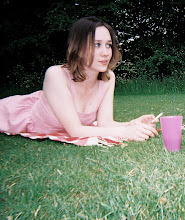Cartier: Le Style et L’Histoire
Le Grand Palais, Paris
04 December 2013 – 16 February 2014
04 December 2013 – 16 February 2014
By CHRISTIANA SPENS
At Christmas-time in Paris, the
city sparkles and glimmers on every street. Shop windows are lit up with
extravagant displays, selections of antique rings and costume jewellery shine
from boutiques next to patisseries and cafes displaying equally sumptuous
macarons, cakes and éclairs. Bon-bons are wrapped around gateaux like beads on
haute couture, fairy lights sprinkle over trees, and the Eiffel Tower, as
usual, glimmers on the horizon. The churches are lit with more candles than
usual, and the evening twilight filters through stories in stained glass. The
water of Canal St-Martin reflects crimson, green, blue and white lights from
the restaurants along the edge, and the Seine reflects the stars.
This brilliant Parisian spectacle
makes the wintertime exhibition of Cartier’s history well-timed and yet
unexceptional. In the City of Lights, a collection of diamonds in a dark room –
however rare the rocks and however magnificent the surroundings – is only one
more corner in such an array of glamour and style that the richest details are
not necessarily the most fascinating. The most extravagant tiaras in the world
cannot compare to the stars or the moon reflected in the Seine. Diamonds may be
forever, but there is something rarer, somehow, in catching the transient
beauty of a Parisian night.
And yet the many reviewers of this
high-profile show have almost consistently sung its praises, especially in the
British media, as if swapping words for diamonds themselves, or as if they had
not experienced the rest of Paris at that time. Or, perhaps, diamonds really
are fascinating to many people. Certainly there were crowds in awe of the
various show-stealers: Elizabeth Taylor’s earrings from her third husband, and
the necklace given to her by Richard Burton; the tiara Catherine Middleton wore
for her wedding to Prince William; jewels made for Princess Grace of Monaco,
and a 23.6 ct Williamson pink diamond, set in a flower brooch for Queen
Elizabeth II. Wallis Simpson, too, had a number of pieces commissioned, when
exiled in Paris, and rejected by the British Royal family: an exquisite
scattering of amethysts, diamonds and sapphires; a brooch the shape of a flamingo,
a panther made of diamonds.
It is all quite extravagant, and
yet writing about jewellery – or jewellery written about – is far more
attractive and exciting than the jewels themselves. The stories behind the gems
– the romances, inferiority complexes, the charisma of Elizabeth Taylor playing
to the camera in a gift from Burton – are entertaining and interesting. The
jewels, when displayed on black velvet, behind glass, with security guards, are
less so. They have become rocks again, devoid of glamour, which has never
really been wealth, but rather, spectacle. These are the tools of glamour, the
currency of elitism. It is hard to wander around such an exhibition without
feeling a slight bemusement, or even revulsion, at the crowds of ordinary people
bustling in front of these windows for a chance to glimpse a princess’s brooch,
or an oligarch’s ornament, or a movie star’s status symbol. For as much as
Cartier say and believe that this exhibition is interesting because of the
exquisite craft and design involved, or the natural dazzle of rare diamonds, it
seems far more obvious that it is an attraction because of the people who have
bought them. That is less an art exhibition, and more of a symptom of celebrity
obsession, one with a clear historical precedent. Here we have a history of
colonialism, slave labour, and oligarchy. Here we have monarchs spending money
on pink diamonds during wartime, and rejected socialites making themselves feel
better by buying from those royals’ jewellers. Wandering round, it is as if the
ghost of the Great Gatsby haunts the exhibition: all these jewels, all this
wealth, all this materialist desire, and for what? The designers of these
pieces were no doubt brilliantly talented, but those designs (more beautiful on
paper than realised in rocks, it must be said) have ended up mere mergers and
investments (and a huge PR stunt for Cartier) explained as art. The Grand
Palais is magnificent, with its Salon d’Honneur decorated with projections like
a kaleidoscopic Rorschach test, though in a way that upstages the jewels
themselves.
The most interesting part of the
exhibition, in my opinion, were those displays ignored by the crowds: the Art
Deco drawings and paintings, the costumes designed for the stage, and dresses
studded with jewels for the ballet, including Ida Rubinstein’s headdress in
“Scheherazade” – made of blue feathers, crimson and green stones, and pearls,
and inspired by the designs of the Ballet Russes. Most fascinating of all was
the bird made of jewels the colours of the French tricolour, in a golden cage,
which was Cartier’s protest against the Nazi occupation of Paris during WWII. A
caged bird, of course, where the jewels do not matter so much as the principle,
which on this case is a noble one, and a brave one, and a story that runs
deeper than the many marriages and romantic gestures that Cartier has cast in
diamonds through the ages. This single piece saves the exhibition, reminding us
that some things are worth saving, some things are precious and rare. Freedom
and spirit, whether expressed through diamonds or not, seem all the more
desirable having spent time in “Cartier: Le Style et L’Histoire”. Walking
outside into the Parisian night, the city aglow with its many natural (and not
so natural) lights and all that glitters, we can be in awe once again.

No comments:
Post a Comment